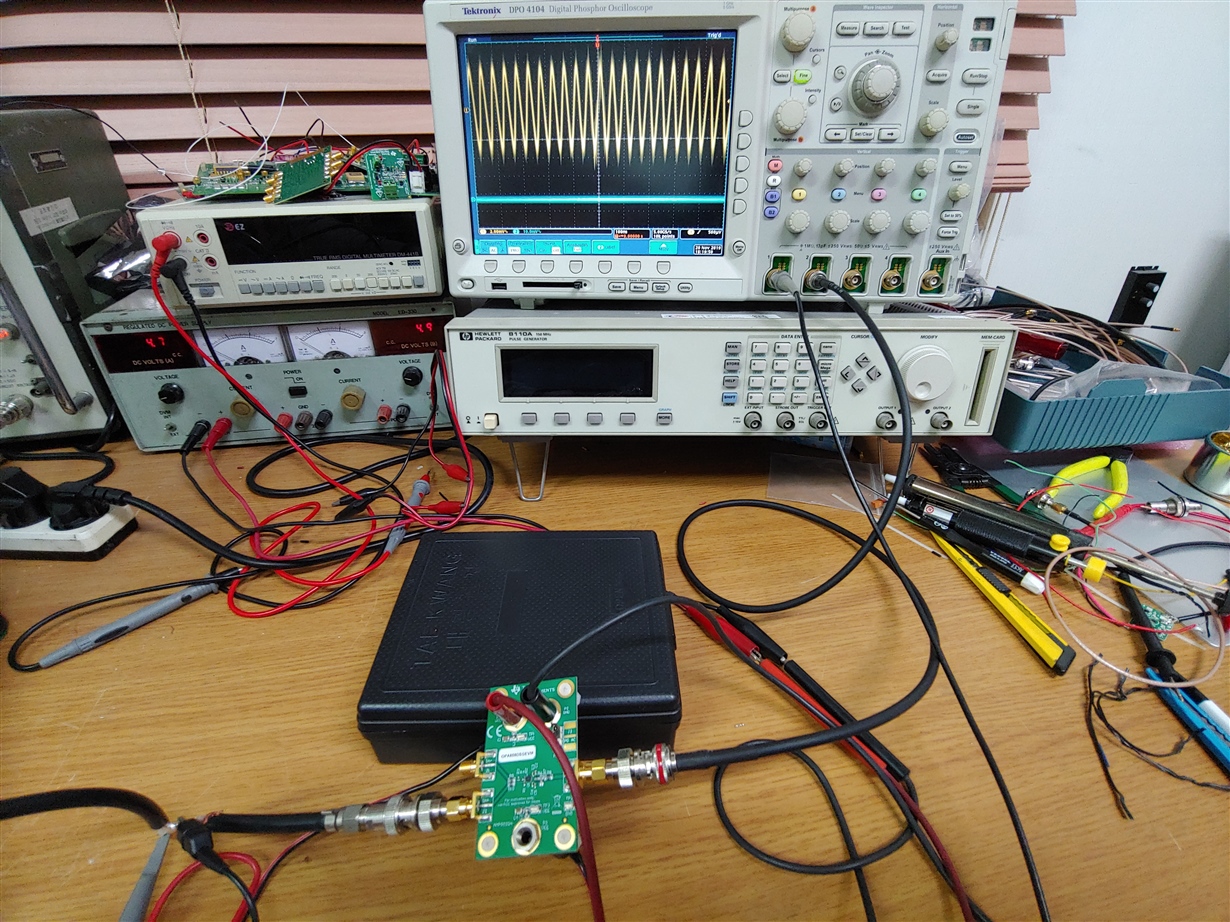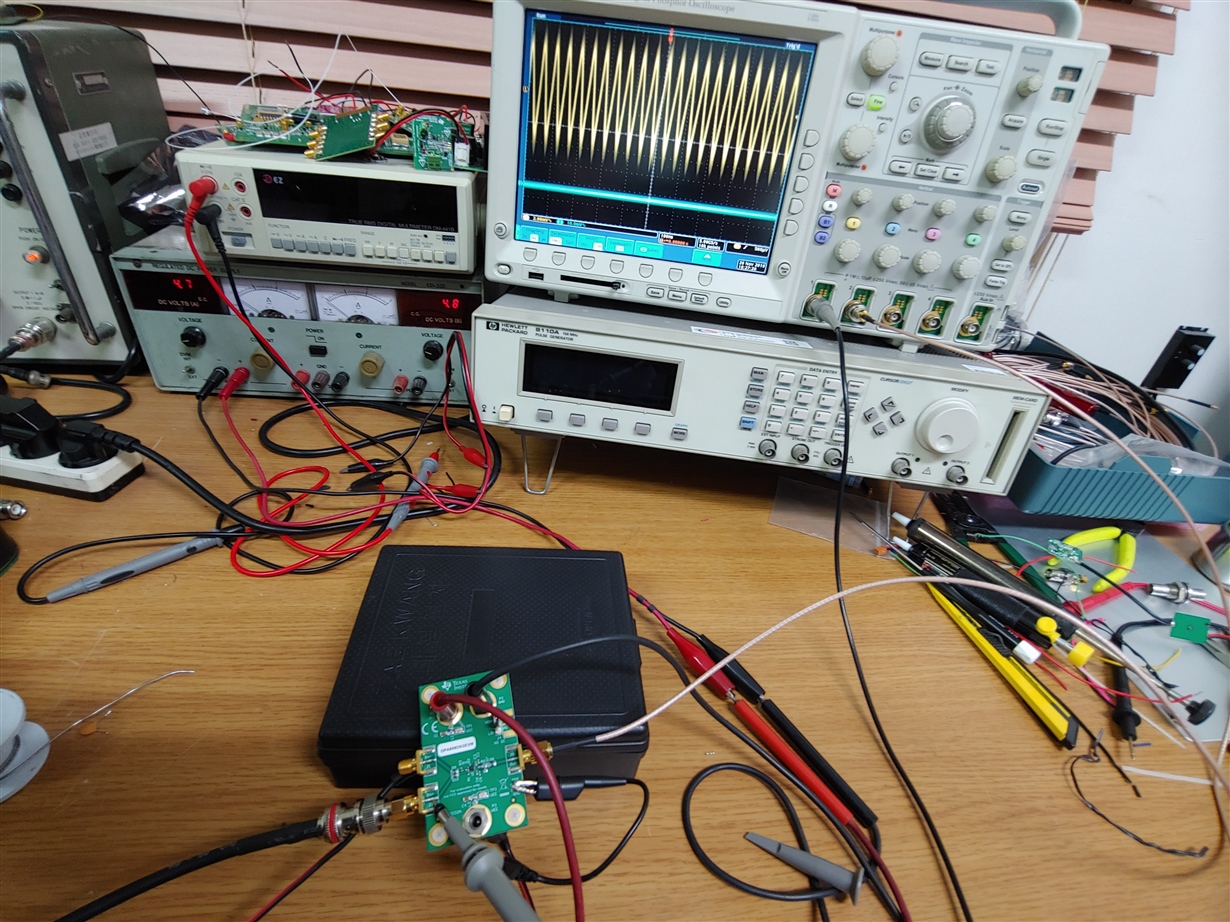Other Parts Discussed in Thread: OPA858
Hello there,
First of all, I am going to describe how I use OPA858DSGEVM. I connected a photodiode into the IN+, an oscilloscope with the OUT and the IN- ground. Using another circuit with a light source, LED, to control photodiode and expect the oscilloscope would record the signal. Besides, I set up all the connectors, voltage bias, and switch. However, it can not work in this way. It seems that there is no current went into OPA858DSGEV. Do you have any ideas about where it did wrong? I
Best regards,
David Lin



